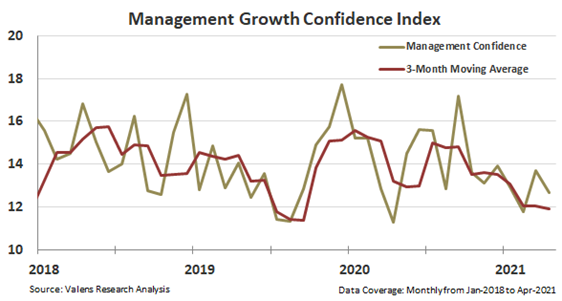Infrastructure spending is as much in the realm of CEOs as Presidents

After an investigation, it looks like America has failed to make the infrastructure grade.
This isn’t only the fault of Capitol Hill. Management teams also make decisions that have an impact on infrastructure development in the United States, through investment into other companies as customers.
To understand how this cycle of investment impacts the economy, read below.
Investor Essentials Daily:
The Monday Macro Report
Powered by Valens Research
A few weeks ago, one of Wall Street’s darling economists went onto Bloomberg News to talk about the current state of infrastructure in the United States.
Abby Joseph Cohen was the Chief Investment Strategist at Goldman Sachs before retiring in 2008, although she still serves in an advisory role to the firm in economic matters.
Throughout the course of the interview, she highlights how U.S. infrastructure spending is at all-time lows when compared against GDP. The effects of this can already be seen across the United States.
A recent crack in a Mississippi River bridge that passed inspection, which then held up river traffic for days, highlights doubts about the health of aging construction. Colonial Pipeline was vulnerable to a ransomware attack, being forced to go offline to address the issue. The recent winter storm in Texas crippling the entire grid points to further issues in both state and federal budgeting.
The American Society of Civil Engineers (ASCE) gives America a yearly grade for its infrastructure, with the country getting a C- on its 2021 report card. The ASCE forecasts a required cost of over $2 trillion to make America’s infrastructure once again reflect the country it services.
Abby Cohen highlights that investors should be aware of the need for infrastructure over the next few years and prepare their portfolios accordingly.
More importantly, as she highlighted in particular at 4:52 of the video, one of the big issues in getting infrastructure going isn’t necessarily just government spending…but also private spending.
Management teams of corporations are now loath to invest…
Abby Joseph Cohen highlights a key issue building in the economy we have brought up before on the Investor Essentials Daily.
Recently, total U.S. private sector investment isn’t keeping pace with cash flows. In other words, management teams aren’t investing as much today to maintain their company’s earning power.
As the economy has gotten deeper into 2021, counterintuitively management teams are having less confidence in future demand, which means they are less willing to invest their money now into the future.
Without growth in investment accelerating, earnings growth is capped. Management is sacrificing future earnings to husband resources now.
To understand why management teams are easing up on the gas pedal, we can turn to two of our tools to gauge management sentiment.
Here at Valens, one way we get insight into what management teams across the market are really thinking is by leveraging our Earnings Call Forensics framework and tracking overall management confidence and concerns.
By gauging “confident” and “concerned” statements against each other, we can compile a Management Growth Confidence Index. We can track when management teams have confidence, and this generates highly confident (“HC”) and excitement (“EXC”) markers. When management teams are more concerned and holding back on their outlook, it generates highly questionable (“HQ”) markers.
We combine all those signals together into this one ratio. When the olive one-month ratio line and the maroon line, which is the 3-month average of this ratio, are lower, it signals management teams are less confident about their outlook. When these are higher, that means management is getting more bullish about the opportunities they see.
If management teams are more confident, they’re more likely committed to investing in growth. This means they’ll have more HC and EXC markers compared to HQ markers during earnings calls.
As you can see below, management sentiment has fallen below late 2020 highs, when companies had easy access to stimulus cash and were excited about opportunities for growth. This growing negativity translates to the unwillingness to put money to work that Abby Joseph Cohen was talking about.
Another tool we can use to measure management sentiment is insider buying levels.
By looking at a combination of insiders buying versus selling of stocks for a wide swath of US corporations, we can understand not just how management teams are thinking about their corporate outlook. We can also understand how they’re voting with their wallets.
As you can see below from the SEC data, insider buying to selling (the green line) has trended down well below average levels over the past few months, as management teams are waiting out the current market rally for a more opportune time to invest.
Looking at these two metrics together, we can get the context to see that management teams are not as confident in the future as they were during the initial recovery from the pandemic.
As we have talked about over the past few weeks, this market exuberance isn’t a reason to panic and sell your stock. It is reasonable to expect that the market isn’t going to keep on marching higher as it has the past 15 months though.
Investors should be ready for volatility in the short-term, similar to 2015 and 2018.
Best regards,
Joel Litman & Rob Spivey
Chief Investment Strategist &
Director of Research
at Valens Research






